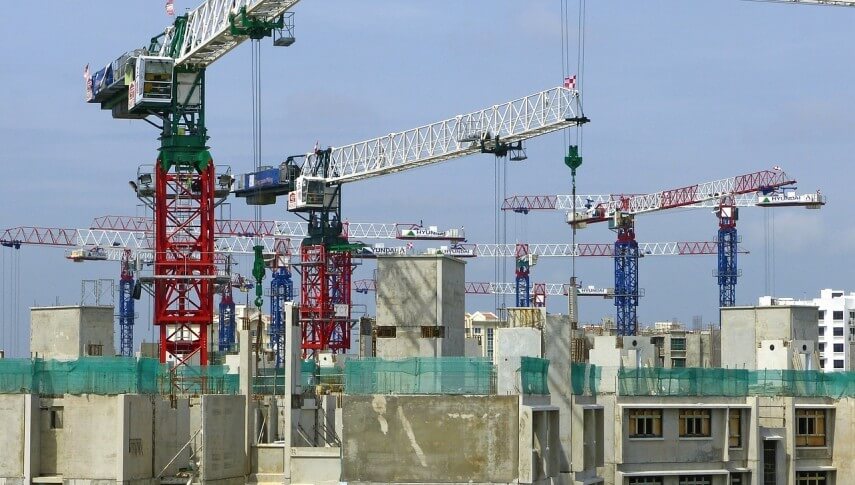2015: A Year Of Policies That May Change The Face of Real Estate

2015 has been a year of many missions as far as the real estate sector is concerned. The Prime Minister Narendra Modi-led government launched the Housing for All Mission, the Smart Cities Mission and the Atal Mission for Rejuvenation and Urban Transformation (AMRUT) this year to house its growing population in a better way. Apart from these, the government proposed several policy reforms in 2015 that may change the face of Indian real estate in future.
PropGuide lists at some of the government initiatives in the real estate sector:
Rental reforms
Speaking at the National Consultation on Draft National Rental Housing Policy, 2015, Union Urban Development Minister Venkaiah Naidu's said that rental housing was more inclusive. A look at India's rental stock would show the significance of the minister's statement. Data shows that only 11 per cent of the total housing stock is in the rental market, while it is two to three folds greater in many developed countries. While there is a shortage of nearly 19 million homes in urban India, over 11 million homes lay vacant. (Of this 19 million households, only 0.53 million households are truly homeless.) In a scenario like this, nothing is more important than a functional rental market for these households to meet one of their most fundamental needs.
The issue is not only of rental housing versus ownership. The quality and quantity of the housing stock will improve greatly when rents are not governed by stringent government policies, when rental yield is high, and when there is better maintenance and better standards of construction. More houses will be traded in the market when tenants do not fear of being evicted, and when landlords do not fear tenants overstaying. Contracts between landlords and tenants are more stable when inflation is low, like it has been for more than a year. (A high inflation would mean tenants have to pay more.) All this could be made possible, if the government implements the proposals in the draft National Urban Rental Housing Policy, 2015, which attempts to ensure that the interests of both tenants and landlords are protected to a large degree.
Foreign investment
The government eased many foreign direct investment (FDI) restrictions governing the construction industry in November. Foreign investors no longer have to comply with the minimum capital requirement of $5 million in the first six months since a real estate project is initiated. There is no longer the minimum floor area requirement of 20,000 square metres. Moreover, from now onward, if the three year lock-in period is completed, foreign investors will be allowed to exit projects. Investors can also exit projects even before the lock-in period by transferring their stakes to another non-resident. The lock-in period does not apply to hotels, tourist resorts, hospitals, special economic zones (SEZs), educational institutions, old-age homes and investment by NRIs. FDI in India rose by 27 per cent in 2014-15 to $ 30.93 billion, and let us hope that 2016 will be better.
The government has also relaxed Foreign Exchange Management Act (FEMA) norms, allowing greater foreign investment in rent-yielding real estate properties. Before the revision of the FEMA regulations, the Indian government allowed foreign investment only in completed office and real estate assets.
Real Estate Bill
The Union Cabinet recently approved the Real Estate (Regulation and Development) Bill 2015. The Bill may not be passed by Parliament in the Winter Session, but it is expected to make the sector transparent by ensuring that developers disclose all relevant information related to their projects. The Bill also proposes harsh penalty for default, for developers, home buyers and agents. Greater transparency will urge greater investment in Indian real estate markets, making housing more affordable. This will lower many of the transaction costs involved, increasing the velocity of transactions in the sector. As the real estate sector has witnessed projects being delayed and demand being sluggish for the past two years, this is an important policy measure.
However, developers are skeptical of the clause that insists that they should keep 70 per cent of the money they collected from buyers in an escrow account, because construction costs are often lower than 70 percent in large Indian cities. (Land costs form a major chunk of the cost of a residential project.) Developers are also of the opinion that regulatory agencies, too, should be brought within the ambit of the law.
Land Acquisition Bill
The Land Acquisition Bill, which has been passed by the Lok Sabha, is pending approval in the Rajya Sabha. The current government amended many of the clauses in the previous government's Bill that made land acquisition difficult. The government, however, maintains that state governments can frame their own laws to make land acquisition laws flexible. The competition among states in making the law easier to do business might make land acquisition easier in some Indian states.
Others proposals
- As Union Finance Minister Arun Jaitley eased the norms on long-term capital gains tax in the previous Budget, India may see its first Real Estate Investment Trust (REIT) in 2016. The government had also eased norms on minimum alternate tax.
- The Urban Development Ministry got 85 out of 98 proposals for the smart city mission, on which the government may spend Rs 2.5 lakh crore. Even though the plan for 45 mission cities was prepared by foreign companies from over 20 countries, it is not yet clear how smart cities will be built.
- The government also says that there will be a single-window clearance system for urban construction and that there will be a streamlining of the process.